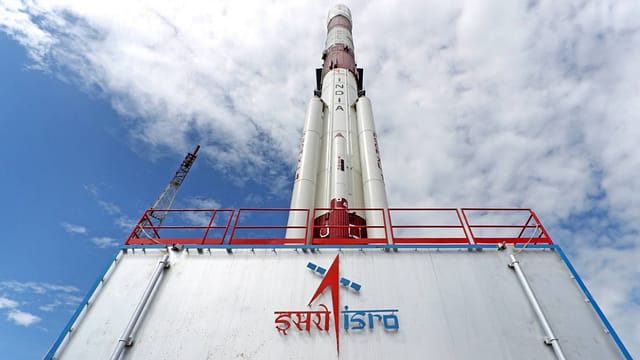ISRO’s Upcoming Missions Unveiled After Chandrayaan-3 Success

In the wake of Chandrayaan-3’s triumphant accomplishment, ISRO is gearing up for a spectrum of pioneering space endeavors. As one of only six government space agencies worldwide boasting comprehensive launch capabilities, cryogenic engine deployment, extraterrestrial missions, and an extensive fleet of artificial satellites, ISRO is set to leave an indelible mark on space exploration.
On August 23, 2023, India scripted history by becoming the first nation to achieve a successful lunar south pole landing, marking the culmination of ISRO’s moon mission.
In an unprecedented feat for space programs globally, India’s Chandrayaan-3 mission achieved a smooth landing of the Vikram lander near the lesser-explored lunar south pole, precisely at 6:04 pm IST (12:34 GMT).
Embarking on the Space Odyssey
While this achievement is momentous, the journey into space has only just begun. Around the world, governments and corporate entities like Roscosmos and NASA frequently launch rockets, satellites, and rovers to make strides in space exploration. ISRO, too, stands at the forefront of space technology development, with an array of missions set for the next decade and beyond.
Advancements and Ambitions
ISRO’s legacy commences with the launch of India’s maiden satellite, Aryabhata, facilitated by the Soviet space agency Interkosmos in 1975. Currently operating the world’s largest remote sensing satellite constellation, ISRO also administers the GAGAN and IRNSS (NavIC) satellite navigation systems. The organization has undertaken three lunar missions and a Mars mission. Notably, here are some of the forthcoming missions:
ADITYA L1: Unveiling Solar Mysteries
Introducing Aditya L1, India’s inaugural solar exploration mission. The spacecraft is slated to orbit around the Sun-Earth system’s Lagrange point 1 (L1), positioned approximately 1.5 million kilometers from Earth. Aditya L1’s halo orbit will enable continuous solar observation, uninhibited by eclipses or occultation, crucial for monitoring solar activity and its impact on space weather.
Key Goals of Aditya L1:
- Study the dynamics of the solar upper atmosphere.
- Measure temperature, velocity, and density of the coronal and coronal loop plasma.
- Unravel the cascade of events leading to solar eruptions across different layers.
- Explore magnetic field measurements and topologies in the solar corona.
- Investigate drivers of space weather like solar wind dynamics, composition, and origin.
GAGANYAAN: India’s Human Spaceflight Program
Gaganyaan, India’s first crewed orbital spacecraft, is primed to spearhead the Indian Human Spaceflight Program. The spacecraft, with a capacity of three crew members, is designed for orbital rendezvous and docking. Initially planned for launch in 2021, Gaganyaan’s first crewed mission has been postponed to around 2025.
XPoSat: X-ray Exploration
ISRO’s XPoSat mission is dedicated to studying intense astronomical X-ray sources in challenging conditions. By examining the polarization behavior of such sources, XPoSat aims to enhance our understanding of complex celestial phenomena like black holes, neutron stars, and active galactic nuclei.
NISAR: Collaborative Earth Observation
ISRO and NASA are collaborating on the NISAR (NASA-ISRO Synthetic Aperture Radar) Low Earth Orbit observatory. NISAR will map the entire planet within 12 days, offering consistent geospatial data for analyzing changes in ecosystems, ice mass, vegetation biomass, sea levels, groundwater, and natural hazards.
SPADEX: Space Docking Advancement
SPADEX, or Space Docking Experiment, is a twin spacecraft mission geared towards enhancing orbital rendezvous, docking, and formation flying technologies. This endeavor holds implications for manned spaceflight, satellite maintenance, and close-proximity operations.
SHUKRAYAAN 1: Probing Venus
Inspired by the success of Chandrayaan and the Mars Orbiter Mission, ISRO is exploring the feasibility of interplanetary missions to Venus and Mars. The Shukrayaan 1 mission, aimed at Venus, is anticipated to launch in December 2024.
MANGALYAAN 2: Mars Odyssey Continues
ISRO issued an “Announcement of Opportunities” for Mangalyaan 2 in 2021. However, K. Sivan, ISRO’s chief, confirmed that Mangalyaan 2 will be an orbiter mission and is projected for launch in the upcoming year.
In essence, these endeavors mark significant milestones for India’s space exploration journey. These forthcoming missions hold immense potential to propel India further in the realm of space exploration, showcasing the nation’s evolving space capabilities.
Also check out: Chandrayaan-3 Achieves Historic Soft Landing on the Lunar South Pole – Eleventh Unicorn


